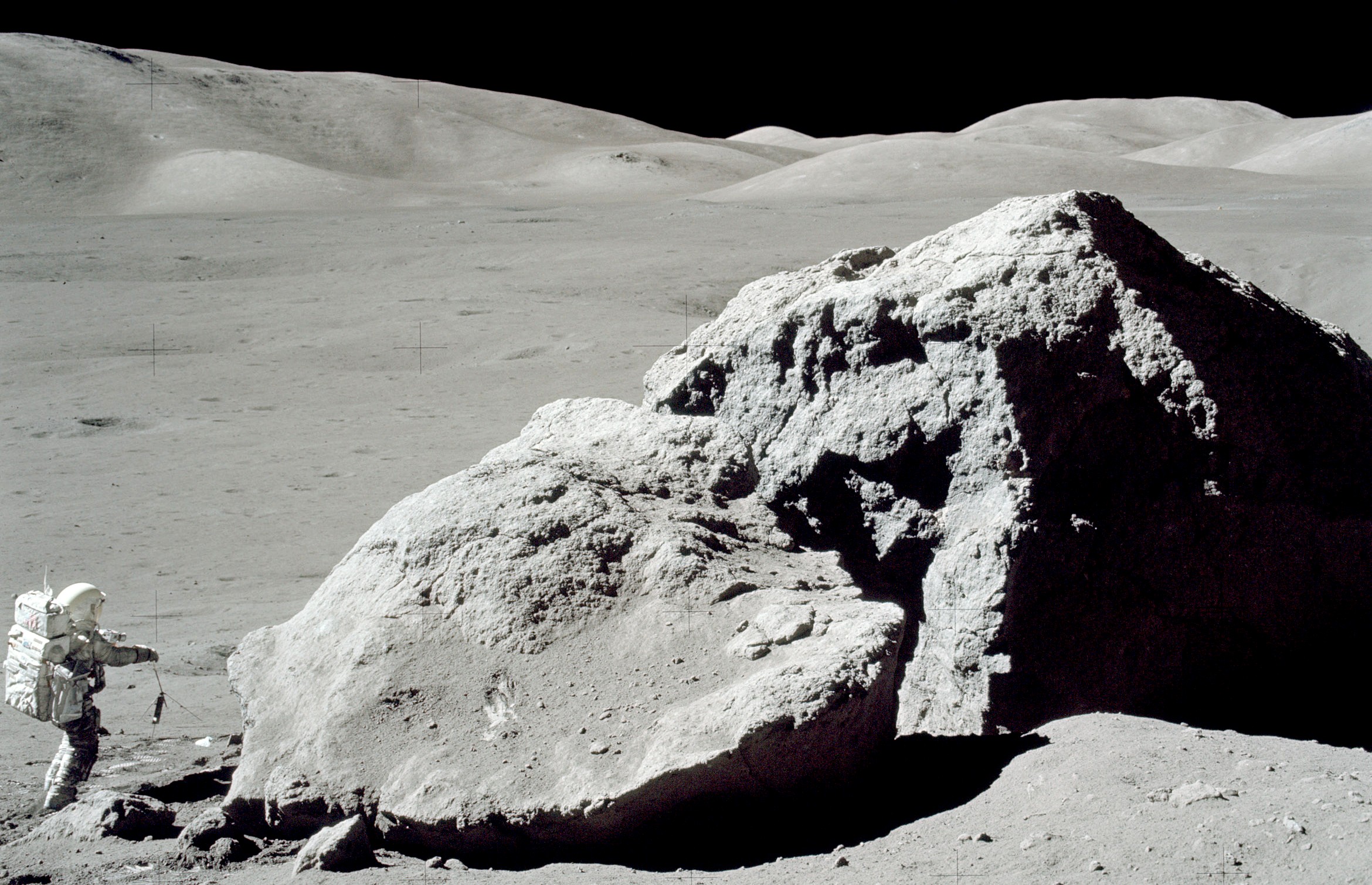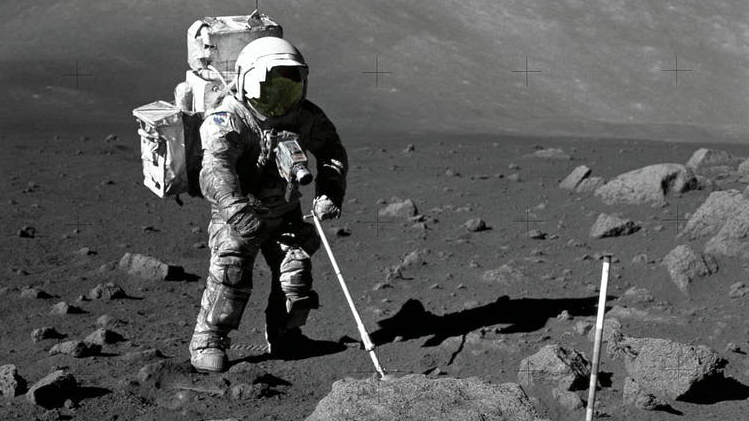The new space race continues to accelerate as hints of the commercialization of space and the exploitation of space-based materials loom. Just today, NASA issued an unprecedented solicitation titled “Purchase of Lunar Regolith and/or Rock Materials from Contractor.” The solicitation asks contractors to bid on an effort to retrieve between 50g and 500g of lunar regolith, or moon dust, and bring it back to Earth before 2024. The amount of material retrieved does not affect the overall price of the contract, and the contract will be awarded on the basis of being “low price, technically acceptable.” Offers are due by October 9, 2020.
Contractors must provide stringent proof of collection, including giving NASA imagery of the collection, the collected material, and a means of identifying the exact location from which the regolith was retrieved. Collected materials may be any type of lunar regolith, including dusts, rocks, or even ice. NASA reserves the right to independently verify that actual collection took place.

According to the solicitation, “NASA will determine and use such independent verification methods that will not interfere with Contractor’s activities.” All analysis and assessment of materials will be conducted by NASA.

Nearly the entire surface of our Moon is covered in regolith, made up of small, loose fragments of rock produced by billions of years of meteoroid and micrometeoroid impacts. There is also lunar soil or lunar dust, a finer subset of regolith with fragments smaller than 1cm. The terms lunar regolith and lunar soil are often used interchangeably, and from the wording of NASA’s solicitation, it doesn’t seem like the space agency is too picky about what types of regolith are brought back to Earth.

Between 1969 and 1972, a total of 842 pounds of lunar rocks and dust were brought back to Earth from the lunar surface during the Apollo missions. As recently as last year, NASA was still opening pristine, unopened samples from those missions in order to better understand the lunar surface. “We are able to make measurements today that were just not possible during the years of the Apollo program,” said Dr. Sarah Noble, a scientist at NASA Headquarters in Washington, about opening and examining a previously unopened Apollo sample in 2019. “The analysis of these samples will maximize the science return from Apollo, as well as enable a new generation of scientists and curators to refine their techniques and help prepare future explorers for lunar missions anticipated in the 2020s and beyond.”

This latest NASA solicitation is part of a growing scientific effort to collect extraterrestrial geological samples and return them to Earth. In 2019, the Japan Aerospace Exploration Agency’s (JAXA) Hayabusa2 spacecraft shot a small projectile into the surface of Asteroid Ryugu and collected the dust generated from the impact. Hayabusa2 is slated to return the samples to Earth later this year.
NASA and the European Space Agency proposed a joint mission earlier this year known as Mars Sample Return which would send robots to Mars to collect regolith and bring the samples back to Earth for analysis.
The Moon is quickly becoming a site of strategic importance as China has turned its eye to our planet’s satellite after years of rapid progress in space exploration. China recently sent the Chang’e 4 lander to the far side of the moon, triggering fears of a new space race that will see the militarization of the moon.

The Moon could also become strategically vital not only for the future of space exploration and possible colonization, but the future of energy production on Earth. The Moon is an abundant source of the isotope helium-3 (He-3) which is a source of fuel for potential thermonuclear fusion power technologies. China and India have both explored mining the lunar surface for He-3 which, if successful, could prove to be a key resource in the burgeoning space-based economy.
The space races of previous decades led to the development of many world-changing technologies and scientific breakthroughs. This latest space race will no doubt follow suit. The only question is whether it will bring humanity closer together or push us farther apart as superpowers vie for dominance in the final frontier.
Regardless, jump-starting the private sector’s lunar ambitions by paying them to go to the Moon and actually return some part of it back to Earth is certainly an exciting step towards whatever future the moon holds for America in space.
Contact the author: Brett@thedrive.com
